Syn.: Castalia ampla Salisb., Leuconymphaea ampla (Salisb.) Kuntze
Family: Nymphaeaceae Salisb.
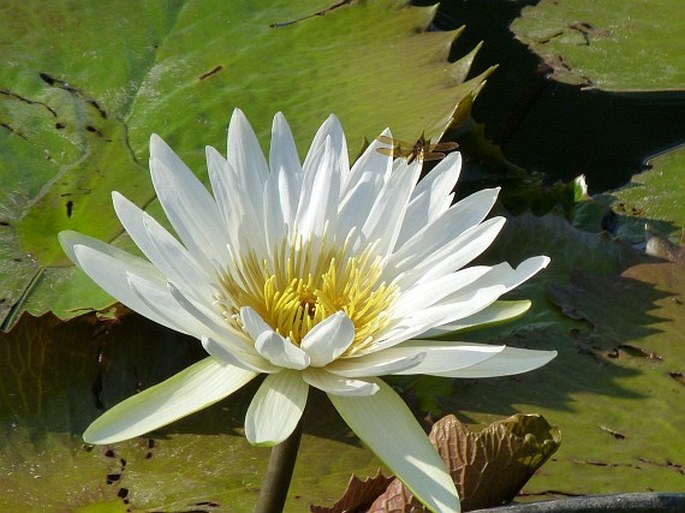
Distribution: From southern Florida and Texas through Mexico, Belize and Caribbean to Costa Rica and Panama, perhaps also Ecuador and Peru.
Ecology: It grows in canals, ponds and ditches, at elevations from 0 to 350 m asl. It blooms all year.
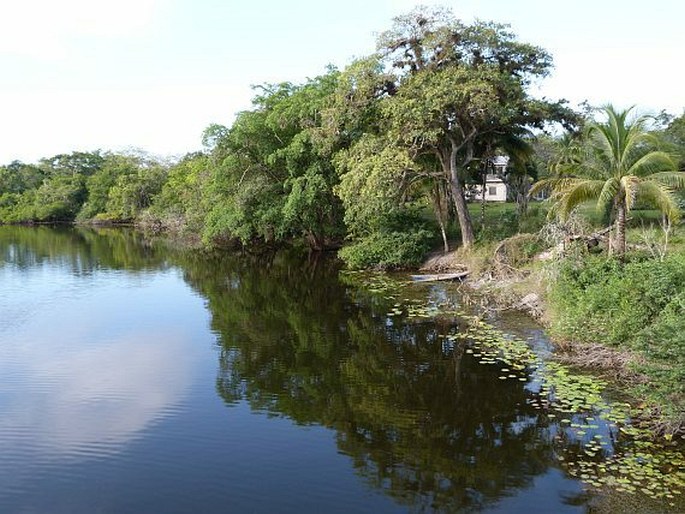
Description: Perennial, aquatic herb, with unbranched rhizome. Leaves alternate, petiolate, ovate to nearly orbiculate, 15–45 × 15–45 cm, margins dentate to spinose-dentate, abaxially purple, often spotted, adaxially green, glabrous. Flowers emersed, long-pedunculate, 7–18 cm diam., opening diurnally, sepals 4, green, abaxially flecked with short dark streaks, petals 12–21, white; stamens 50–190, 1–5 cm long, yellow, filaments widest at or below middle, mostly equal to or shorter than anthers. Fruits 2–3 cm wide.
Use: The ancient Mayas used this plant in many of their rituals.
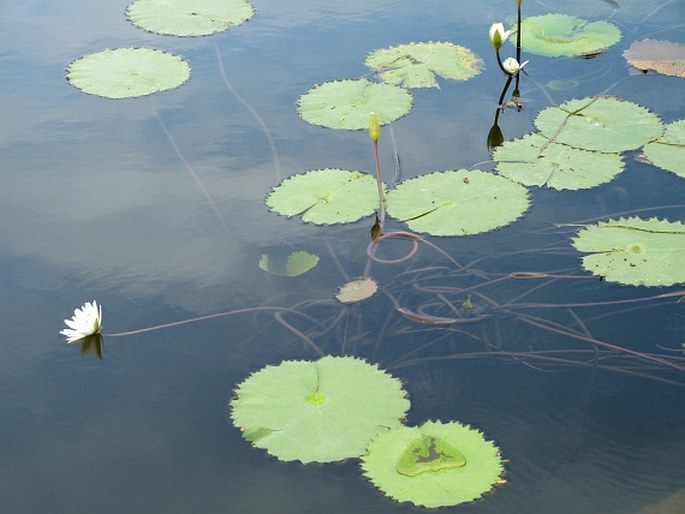
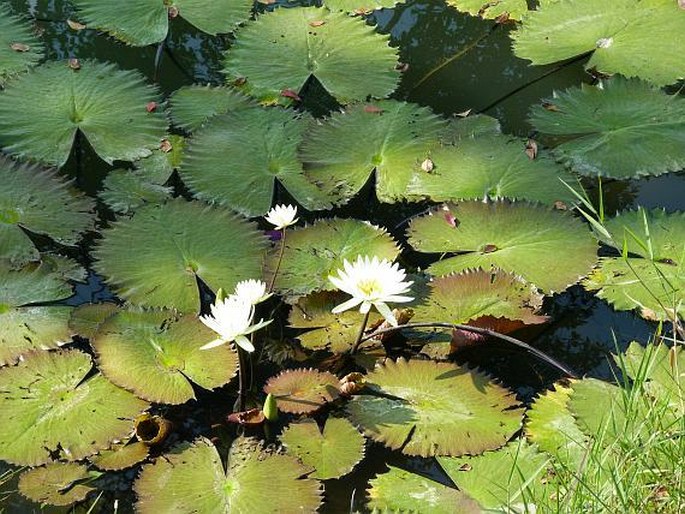

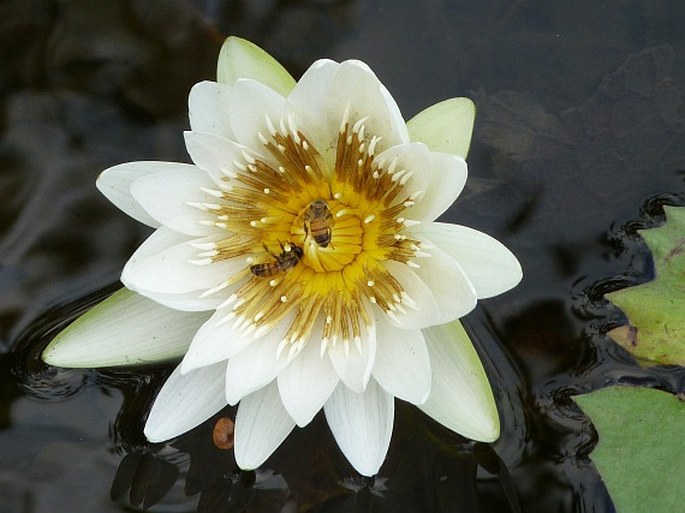
These images were taken in Belize, San Jose Succotz and Lamanai (by Jindřiška Vančurová, February 18 and February 21, 2015).


